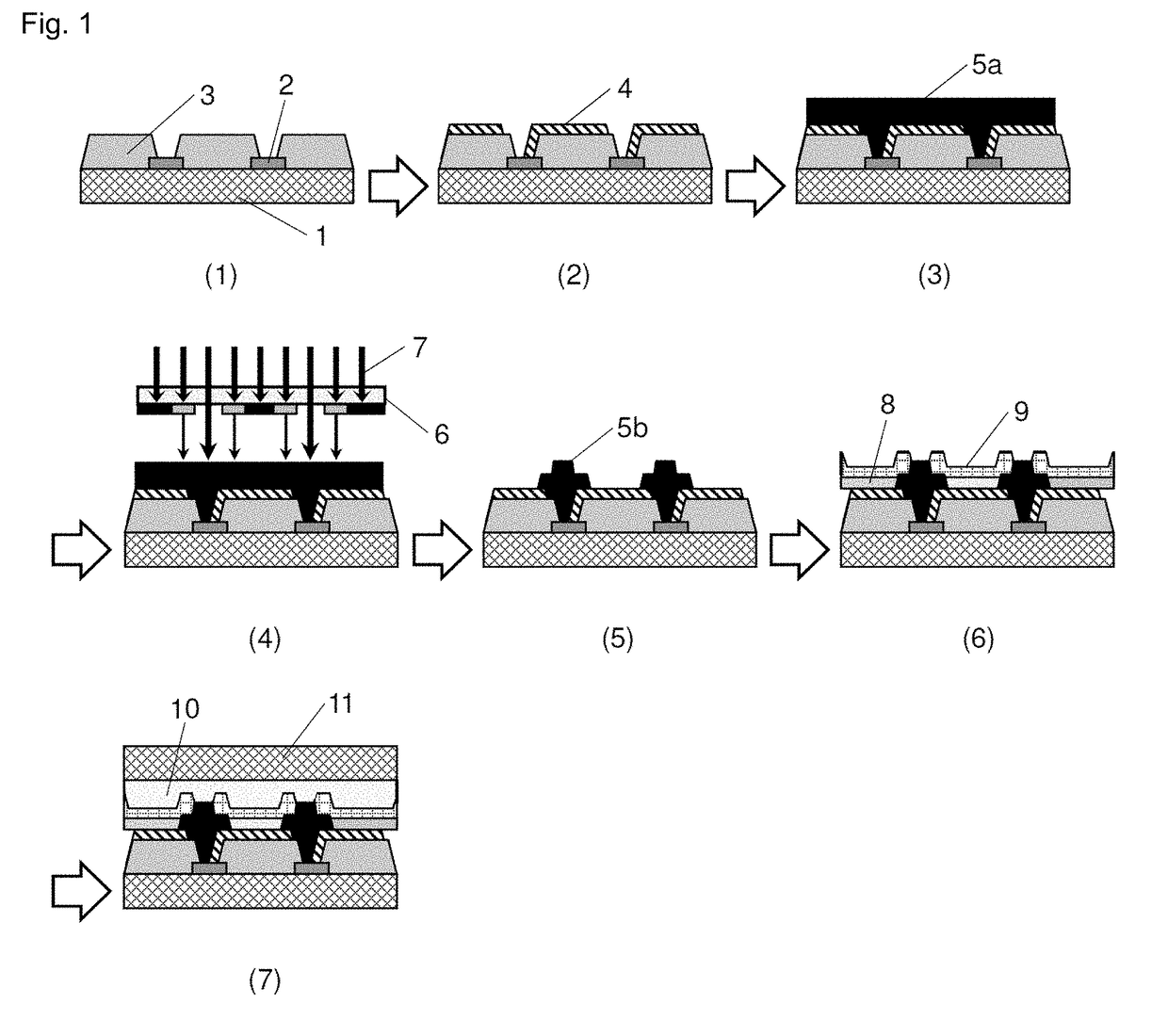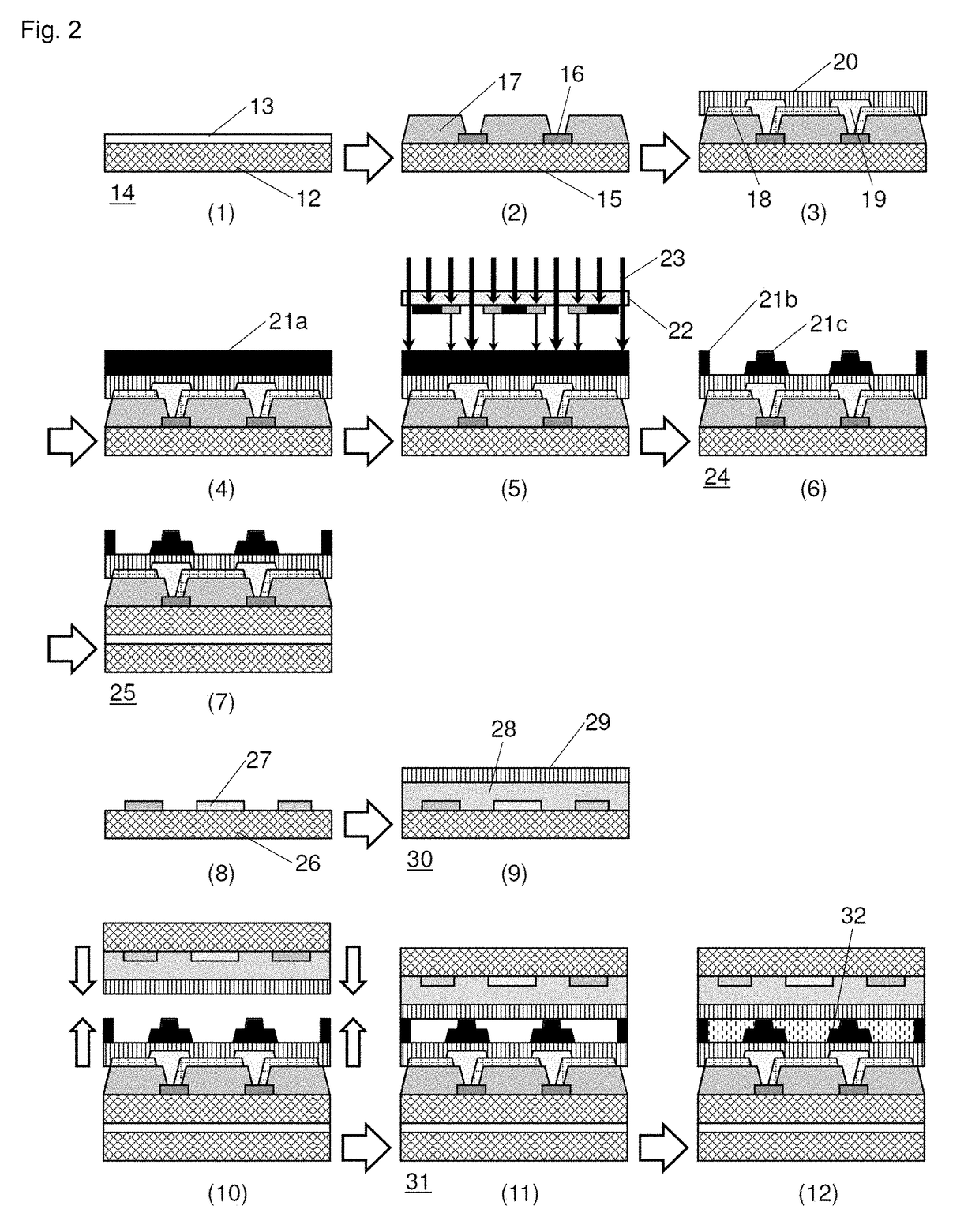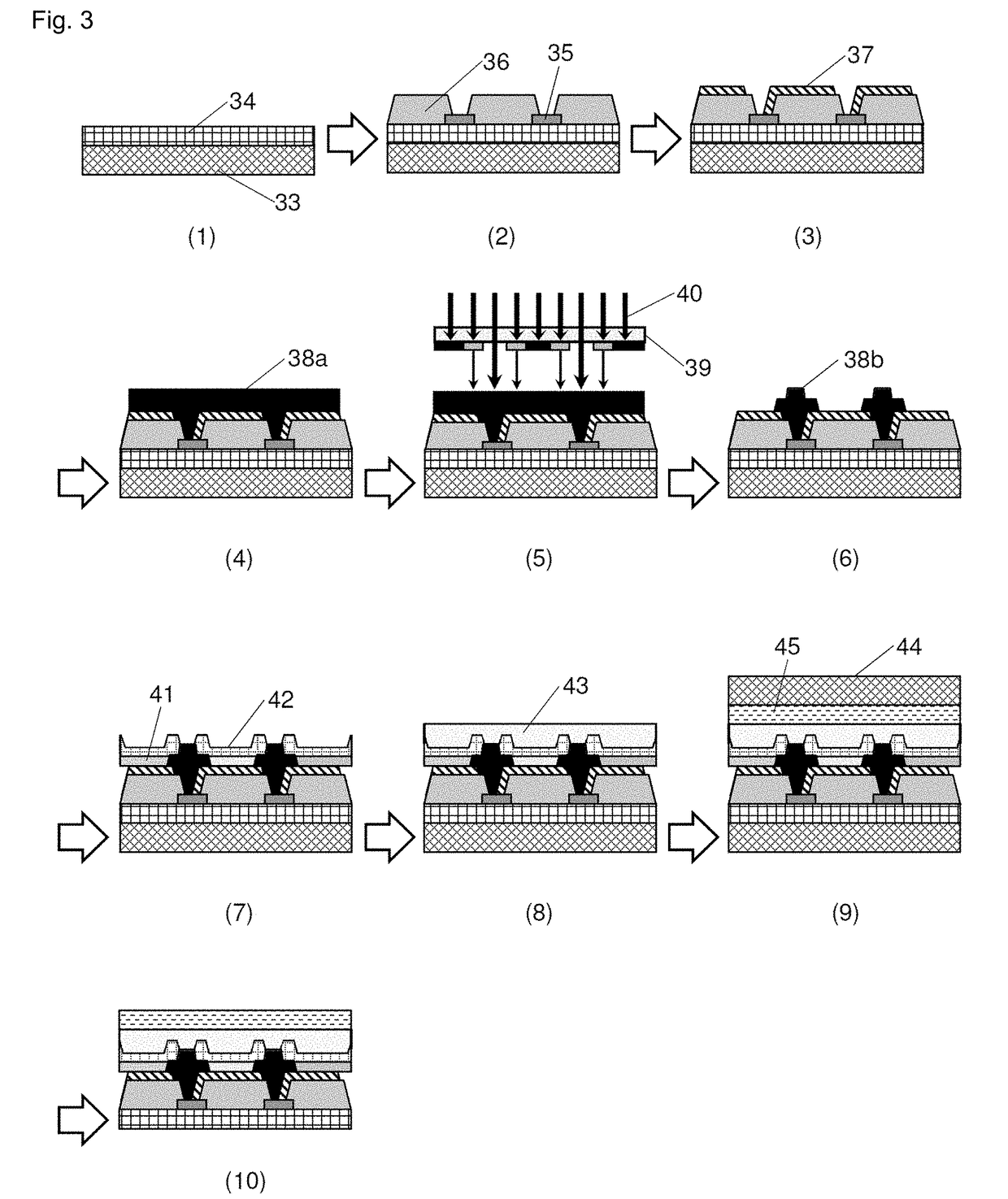Negative-type photosensitive resin composition, cured film, display device provided with cured film, and production method therefor
a technology of negative-type photosensitive resin and cured film, which is applied in the direction of photosensitive material processing, photomechanical equipment, instruments, etc., can solve the problems of shortened life deactivation of emitting materials, and deterioration of light emitting elements luminous efficiency, etc., to achieve excellent halftone characteristics, high sensitivity, and the effect of forming
- Summary
- Abstract
- Description
- Claims
- Application Information
AI Technical Summary
Benefits of technology
Problems solved by technology
Method used
Image
Examples
examples
[0825]The present invention will now be illustrated more specifically with reference to Examples and Comparative examples, but it should be understood that the invention is not construed as being limited to the scopes thereof. Some of the compounds used are referred to using abbreviations as listed below.
[0826]4HST: 4-hydroxystyrene
[0827]6FDA: 2,2-(3,4-dicarboxyphenyl)hexafluoropropane dianhydride;
[0828]4,4′-hexafluoropropane-2,2-diyl-bis(1,2-phthalic acid anhydride)
[0829]AcrTMS: 3-acryloxypropyl trimethoxysilane
[0830]APC: Argentum-Palladium-Cupper (silver-palladium-copper alloy)
[0831]ASL: anisole
[0832]BAHF: 2,2-bis(3-amino-4-hydroxyphenyl) hexafluoropropane
[0833]BFE: 1,2-bis(4-formylphenyl) ethane
[0834]BGPF: 9,9-bis(4-glycidoxyphenyl) fluorene
[0835]Bis-A-AF: 2,2-bis(4-aminophenyl) hexafluoropropane
[0836]Bk-S0100CF: IRGAPHOR (registered trademark) BLACK S0100CF (manufactured by BASF, benzofuranone based black pigments with primary particle diameter of 40 to 80 nm)
[0837]CCR-1171H: KA...
synthesis example (
B)
[0888]Synthesis of compound having naphthoquinone diazide structure (QD-1) In a three neck flask in a dry nitrogen flow, 21.23 g (0.05 mole) of TrisP-PA and 37.62 g (0.14 mole) of 5-naphthoquinone diazide sulfonic acid chloride were weighed out and dissolved in 450 g of 1,4-dioxane and maintained at room temperature. To this liquid, a mixed solution of 50 g of 1,4-dioxane and 15.58 g (0.154 mol) of triethyl amine was added dropwise while stirring it to maintain the temperature below 35° C. After the end of dropping, the mixed solution was stirred at 30° C. for 2 hours. After the stirring, the precipitated triethyl amine salt was removed by filtering and the filtrate was poured in water and stirred, followed by separating out the precipitated solid sediment by filtering. The resulting solid was dried by drying under reduced pressure to provide a compound having a naphthoquinone diazide structure as given below (QD-1).
synthesis example 1
Synthesis of Polyimide (PI-1)
[0889]In a three neck flask in a dry nitrogen flow, 31.13 g of BAHF (0.085 mol; 77.3 mol % relative to total quantity of structural units derived from amines or derivatives thereof), 1.24 g of SiDA (0.0050 mol; 4.5 mol % relative to total quantity of structural units derived from amines or derivatives thereof), 2.18 g of MAP as end capping agent (0.020 mol; 18.2 mol % relative to total quantity of structural units derived from amines or derivatives thereof), and 150.00 g of NMP were weighed out and dissolved. To this liquid, a solution of 31.02 g (0.10 mol; 100 mol % relative to total quantity of structural units derived from carboxylic acids or derivatives thereof) of ODPA dissolved in 50.00 g of NMP was added, stirred at 20° C. for 1 hour, and then stirred at 50° C. for 4 hours. Subsequently, 15 g of xylene was added and stirred at 150° C. for 5 hours while boiling water azeotropically with xylene. After the end of the reaction, the reaction solution w...
PUM
| Property | Measurement | Unit |
|---|---|---|
| Length | aaaaa | aaaaa |
| Angle | aaaaa | aaaaa |
| Angle | aaaaa | aaaaa |
Abstract
Description
Claims
Application Information
 Login to View More
Login to View More - R&D
- Intellectual Property
- Life Sciences
- Materials
- Tech Scout
- Unparalleled Data Quality
- Higher Quality Content
- 60% Fewer Hallucinations
Browse by: Latest US Patents, China's latest patents, Technical Efficacy Thesaurus, Application Domain, Technology Topic, Popular Technical Reports.
© 2025 PatSnap. All rights reserved.Legal|Privacy policy|Modern Slavery Act Transparency Statement|Sitemap|About US| Contact US: help@patsnap.com



